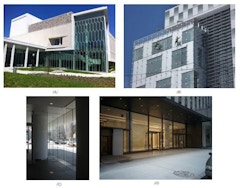Structural Skin
Many prominent, recent buildings feature forms suggesting structural surface while their enclosures are really non-load-bearing curtain wall. At the
Many prominent, recent buildings feature forms suggesting structural surface while their enclosures are really non-load-bearing curtain wall. At the
At the core of facade design is the concept of interdisciplinarity, a bridge between concept and materialization apt to relay a built form



While additive manufacturing (AM) offers unprecedented freedom of design and a remarkable potential for material efficiency and lightweight




Structural glass is used in a range of building applications, and while the ASTM E1300 has recently been updated to provide a design method to




